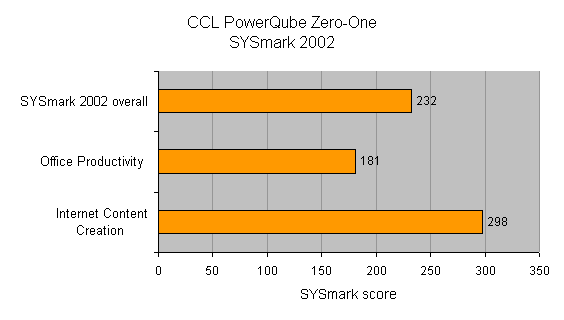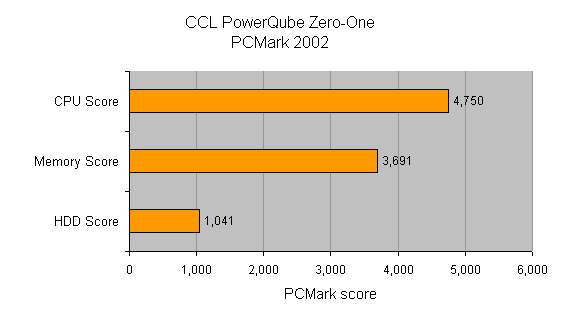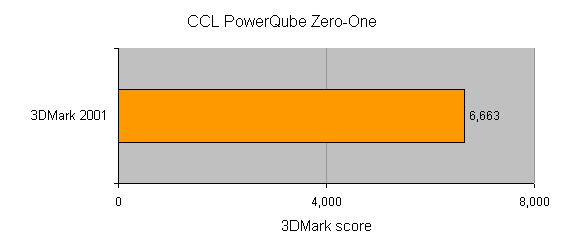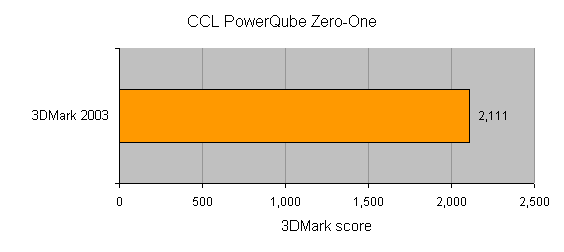CCL PowerQube Zero-One Review
CCL PowerQube Zero-One
Another small form factor PC that looks sleek and stylish. But there's more to a PC than just good looks.

Verdict
Key Specifications
- Review Price: £1174.00
Small form factor PCs have never been more popular that they are now. It seems that for the majority of home users the idea of a small, stylish and unobtrusive PC is a very attractive proposition. For proof of this just look at how popular Apple’s iMacs have been.
Apple was the first manufacturer to produce a computer that people didn’t want to hide in a corner. For many buyers the iMac represented a desirable addition to their décor, rather than something that detracted from it. It took a while for the PC industry to catch up, but we’re finally starting to see PCs that wouldn’t look out of place in a modern living room.
The PowerQube Zero-One from CCL Computers certainly looks the part with a brushed silver finish and a bright blue power LED on the front. It’s slightly larger than other cube systems like the e-Style II from Evesham, but it’s not what you’d call large. Unlike the the Evesham which is based on a Biostar chassis, the PowerQube is built on a Soltek platform. There was a time when your only choice in the cube PC arena was Shuttle, so it’s good to see that there’s more variety available now.
Instead of the slide-down cover favoured by Biostar and Shuttle, this Soltek box hides its optical drives behind spring loaded flaps. The slightly larger dimensions allow for two optical drives rather than the single drive solution usually seen in cube PCs. When the eject button is pressed below either flap, the tray will push open the spring loaded flap and hold it down until you close the tray. This worked fine, but unfortunately the front of the chassis is a bit flimsy and it’s possible to just tap it nowhere near an eject button and witness both optical drives extend their trays.
The drives hiding behind the spring loaded flaps are both manufactured by Lite-On. The top unit is a DVD writer that can burn DVD-R/RW, DVD+R/RW and CD-R/RW media. Below this is a 16-speed DVD-ROM drive.
There’s another flap underneath the optical drives that houses a 7-in-one memory card reader. This is a great addition especially if you use a digital camera or PDA. Unfortunately, the card reader in our review unit refused to work. Not only did the card reader not function, but none of the USB ports worked either. We thought this was very strange indeed and after further investigation we found that when we disconnected the card reader the USB ports miraculously sprang into life. We assume that the card reader in this particular model was faulty which is why it also knocked the USB ports out when connected, but this should not be the case with production models. It’s definitely something worth checking straight away if you buy a PowerQube though.
There’s one final flap at the very bottom of the case which hides a plethora of ports. Here you’ll find two USB 2.0 ports, a FireWire port, an optical S/PDIF and headphone and mic ports.
Inside the PowerQube you’ve got some pretty meaty specs considering its diminutive size. An AMD Athlon XP 2800+ sits in the driving seat with 512MB of 333MHz DDR memory riding shotgun. Graphics come courtesy of a 256MB Sapphire Radeon 9600 card, even though the nVidia NForce 2 motherboard sports onboard graphics with dual VGA output. Storage is well taken care of by a 120GB Hitachi hard disk with a 7,200rpm spindle speed and 8MB of cache.
CCL has stuck with the NForce onboard sound since there’s no space inside the case for a sound card. This is no bad thing since you get a full 5.1 channel output, making it ideal for home cinema purposes. A set of VideoLogic ZXR550 5.1 channel speakers complement the sound chip and make the PowerCube a reasonable choice as a home cinema PC. That said, if you were going to use a small form factor PC as an entertainment centre in your living room, you’d probably want a TV tuner inside it like the Evesham e-Style II.
The software bundle is limited to Windows XP Home, Panda Titanium Antivirus and Ability Office 2002. We would have liked to have seen a copy of Works Suite instead of Ability Office since it includes Microsoft Word.
CCL has chosen the screen carefully and it matches the brushed aluminum finish of the PowerQube perfectly. It’s also a pretty good 17in TFT display from Iiyama, complete with slim bezel and integrated speakers. The image is quite sharp and bright, while the lighting is even and the colours reasonably vivid. This ProLite E431S is similar to the 17in Iiyama TFT that we looked at in our monitor group test last month except that it has the added advantage of a DVI input. The Sapphire graphics card sports a DVI output so you should be able to enjoy a crystal clear digital connection. Unfortunately CCL only supplied a standard analogue D-SUB cable with the PowerQube so a digital DVI connection was tantalisingly close but just out of reach.
The input devices look pretty cutting edge and again match the metallic theme of the system as a whole. The keyboard and mouse are both high-quality Microsoft models and feature an RF based wireless system. The keyboard has an extensive array of multimedia functionality including a complete set of controls for A/V playback. The mouse is one of the latest Microsoft models with the new scroll wheel that can also tilt left and right. Although the added functionality of the wheel is useful, Microsoft has done away with the “click-feel” when turning the wheel. The wheel now turns smoothly and, it has to be said, that everyone in the TrustedReviews office agreed that the new movement made it feel as if the wheel was broken. This of course is a matter of personal taste and we’re sure that there are many people out there who will love the new scroll wheel characteristics.
Performance is reasonable and the 232 score in SYSmark is in pretty much the same ball park as the Evesham e-Style. Where the CCL pulls ahead is in a 3D environment due to the Radeon 9600 graphics card, but you’re still not really going to be playing the latest games with too many features enabled.
When we first powered on the PowerQube we were amazed at how noisy it was. The TrustedReviews office isn’t the quietest place with the amount of kit we usually have on test, but we could clearly hear the PoweQube above everything. We later found out that there was a BIOS setting to switch the PowerQube into “silent mode”. Once activated the PowerQube was far less intrusive, although it’s still nowhere near as quiet as the Evesham e-Style II.
With a price of £1,173.83 the PowerQube is more expensive than the Evesham we reviewed yesterday, and, although it does have a DVD Writer and 5.1 channel speakers, the Evesham still has a better balance of features and value. Inside the PowerQube is rather messy and more care could have been taken with cable routing.
With a bit more attention to detail the PowerQube could have been a decent small form factor system. Unfortunately there are a few too many issues with this particular machine to recommend it.
Since many of the issues with the PowerQube don’t fall into the realm of features, performance or value, we’ve had to mark down the overall score. The untidy build, randomly ejecting optical drives and non-functioning card reader just shouldn’t be present in a modern PC.
”’Verdict”’
The PowerQube Zero-One has the makings of a great living room PC, but it’s let down by poor attention to detail. Hopefully CCL will read this review and address the issues within. Ultimately though, if you’re looking for a small form factor PC right now, there are better options elsewhere.
(table:features3)




Trusted Score
Score in detail
-
Value 6
-
Features 7
-
Performance 6

